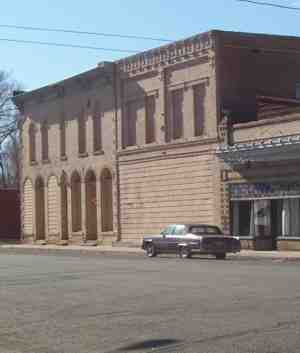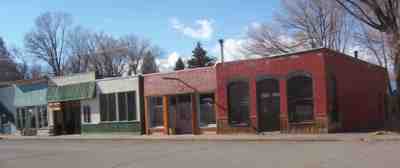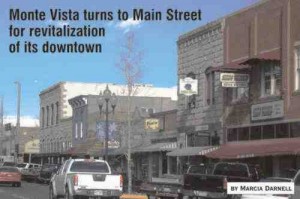Sidebar by Marcia Darnell
Main Street – January 2007 – Colorado Central Magazine
During the last ten years, Saguache’s fortunes have waxed and waned. Businesses have opened, and shut. Sometimes merchants seem thoroughly discouraged, but occasionally there’s a real sense of optimism in the community, and everyone seems convinced that things are about to turn around….
A Cautionary Tale
Once upon a time, Saguache was a thriving business center. But the town’s fortunes have declined considerably.

“I remember we had a drugstore, a hotel, several grocery stores,” says 30-year resident Yvonne Halburian. “It was much more viable.”
Local historian Virginia Sutherland, who has lived in the area all of her 81 years, agrees. “The town began in 1875,” she says. “It never had a railroad. It was built mainly by the ranching industry, mostly sheep. There was a flour mill, two banks, a barber shop, and a big hardware/general store with clothing. A lot of the wool was stored in town. There were two or three hotels, a movie theater, drugstore, and bakery. There were four federated women’s clubs, a Kiwanis chapter. There was an ice house, a dairy, and other cottage industries.
“The population was 2,000 at one time in the area.”
Today Saguache’s population is about 600.
“We have no grocery store,” says Halburian. “There is one service station that sells some food items, and one small store and cafe, one restaurant, one bookstore open in the summer. It’s just kind of sleepy now.
“You know it’s pretty bad when the liquor store closes,” she adds.
Both women agree that the town’s designation as the county seat is the only thing keeping it alive. Saguache County is, in fact, the biggest employer in town.
“I think the decline was brought about by the demise of the sheep industry and the rise of welfare,” Sutherland says. She also cites a decline in population, absentee ownership of farms and the rise of the mega-farm industry.

“It was heavy in ranching — sheep and cattle — at one time,” Halburian says. “Kids didn’t want to do that, so they moved away, and the old timers couldn’t maintain it. There weren’t the people to step forward to do it (change). There wasn’t a lot of energy to restore the town with the kids going away to make money somewhere else.”
“It was quite a self-sufficient town,” recalls Sutherland. “Perhaps if the railroad had gone through there….”


